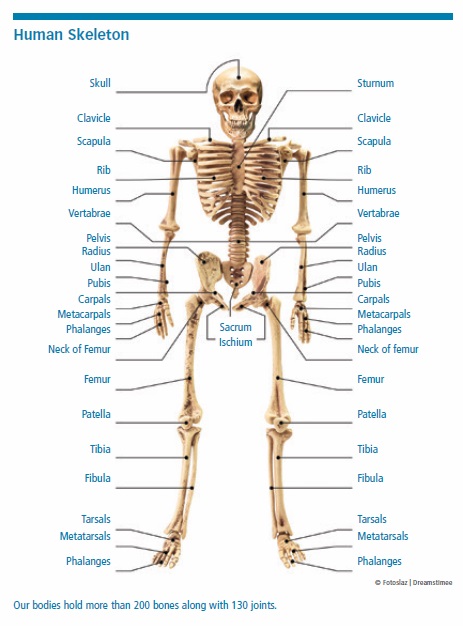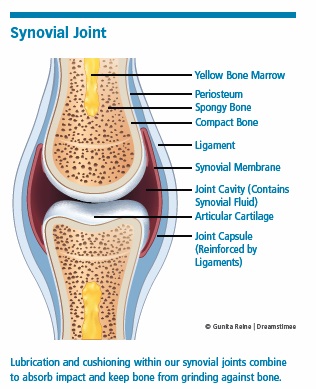1. Introduction to Arthritis
If you have pain, stiffness, warmth, swelling, or redness of a joint, you may well have arthritis, and you are most certainly not alone. It is the most common cause of disability in the United States, affecting more than 54 million Americans. Affecting one in five adults and 300,000 children, the incidence increases with age. Arthritis is defined as inflammation of one or more joints. It is a symptom or sign of an underlying problem, not a disease in its own right.
The first step in conquering your arthritis is to gain a better understanding of your condition, how it may affect you, and your treatment options. There are many therapies for arthritis and most people are able to live productive, fulfilling lives with their diagnosis.
What Is Arthritis?
Arthritis refers to joint inflammation, but the term is also used to describe any disorder that affects the joints. It is a symptom, rather than a specific disease. Arthritic conditions fall into the wider disease category “rheumatic diseases.” There are more than 100 types, each with their own pathology. We will go into some of these later in this report.
Inflammation of a joint produces a varied combination of symptoms including redness, heat, swelling, pain, and loss of function. Not only does it affect the joints themselves but it can go on to involve joints, tendons, ligaments, bones, and muscles.
The Musculoskeletal System
The design of the human musculoskeletal system is truly remarkable. There are 206 bones, more than 130 joints, and 640 muscles, all of which work together to allow us to perform an incredible range of movements and tasks. It is made up of hard tissue (bones and cartilage) and soft tissue (muscles, tendons, joints capsules, synovial membranes,and ligaments).
The musculoskeletal system performs the following functions:

- Movement
- Structure and stability of the body
- Protection of vital organs
- Shock absorption
- Storage of minerals, like calcium
- Formation and supply of new blood cells, in bone marrow.
What Are Joints?
Joints are formed where two or more bones meet. They are classified by the connective tissue in the joint. There are three basic categories:
➧ Fixed or fibrous joints. The connecting tissue is dense and fibrous, holding the bones in place firmly with minimal movement, if any. For example, the sutures of the skull are fixed joints.
➧ Cartilaginous joints. The connecting tissue is tough cartilage, holding the bones firmly, but allowing a little movement. Examples include the joints between the bodies of the vertebrae and the sacroiliac joint (where lower back and pelvis meet). These are moderately susceptible to arthritis.
➧ Synovial joints. These are the most complex joints. The bone ends are covered with cartilage and there is a potential space between the cartilage, filled with synovial fluid. These joints are most susceptible to arthritis. They are found in the limb joints and include those in the fingers, wrists, elbows, shoulders, toes, ankles, knees and hips.
Anatomy of the Synovial Joint
The anatomy of the joint is elaborate and ingenious. The structure of the synovial joint protects joints from high impact, the wear and tear of constant use, and trauma. When hard bone rubs on hard bone, the surfaces erode. Within the synovial joint there is both lubrication and cushioning that reduces friction and subsequent damage.

Cartilage is the tough but slightly elastic tissue that forms a protective cushion on the end surfaces of the bone within the joint: Imagine a balloon containing a sponge and filled with water. It can absorb pressure and mold into shape to match the opposing surface. The synovial membrane attaches at the edges of the cartilage to form a sack that contains the synovial fluid, which lubricates the joint.
The joint capsule is outside of the synovial membrane and encloses the whole joint. The structure of the joint is further supported by the ligaments, which are tough, flexible, fibrous bands that connect bone to bone. The tendons are like ligaments, but connect muscle to bone. In sites where friction from the tendons would damage surrounding bone and muscle, fluid filled sacs called bursae act as cushions.
Pathology of Arthritis: What Goes Wrong?
Broadly speaking, there are four types of disease processes that can cause arthritis: degenerative, inflammatory, metabolic,
and infectious.
Degenerative Arthritis
Degenerative arthritis is caused largely by wear and tear. The protective mechanisms within the joint deteriorate, allowing bone to rub on bone, or soft tissue. Pain, swelling, and stiffness result. Over time this may lead to joint instability, deformity, weakness, chronic pain, disability (loss of ability to perform a task), and reduced quality of life. The most common type is osteoarthritis (OA), which may occur due to the aging process or trauma to the joint. Recent research has pointed to an underlying inflammatory process that makes certain people susceptible to OA.
Inflammatory Arthritis
A healthy immune system protects the body from foreign invaders, such as bacteria and viruses, and from injury. In inflammatory arthritis the immune system begins to attack the person’s own tissue. The resulting inflammation strikes the joints and other organs, like the eyes and skin. Rheumatoid arthritis and psoriatic arthritis are the two most common types. The inflammatory response is believed to be triggered by a combination of genetic susceptibility and environmental factors such as smoking and inflammatory foods.
Metabolic Arthritis
Metabolic arthritis occurs due to a disorder of metabolism of chemicals within the body. Gout is the most common form: It occurs when there’s a problem with purine metabolism. Purines are biochemical compounds found in food and made by the body. When purines are broken down, they form uric acid, which is normally excreted by the kidneys. Sometimes too much uric acid is eaten or produced, or the kidneys do not keep up with excretion and so it builds up in the blood stream (hyperuricemia). In susceptible individuals, uric acid crystals then form in the joint, causing inflammation. It is characterized by acute episodes, which occasionally become chronic, causing significant damage to a joint.
Infectious Arthritis
Rarely, an infectious agent such as a bacterium, virus or fungus reach the joint and cause inflammation. Examples include salmonella and shigella (gut bacteria), chlamydia and gonorrhea (sexually transmitted diseases), and hepatitis C. Prompt treatment with antibiotics can cure infectious arthritis, but at times it may become chronic.
The post 1. Introduction to Arthritis appeared first on University Health News.
Read Original Article: 1. Introduction to Arthritis »
Powered by WPeMatico


